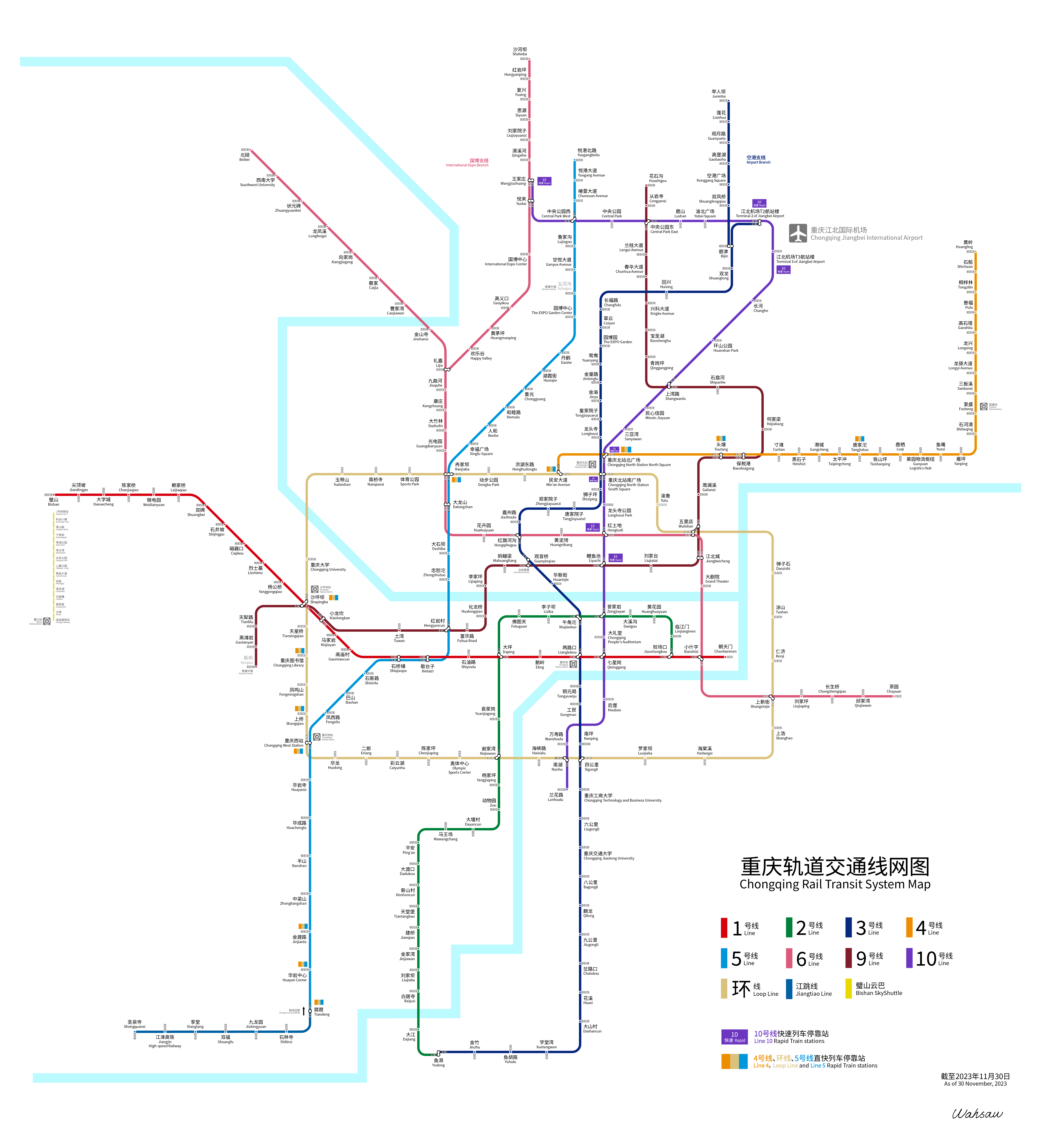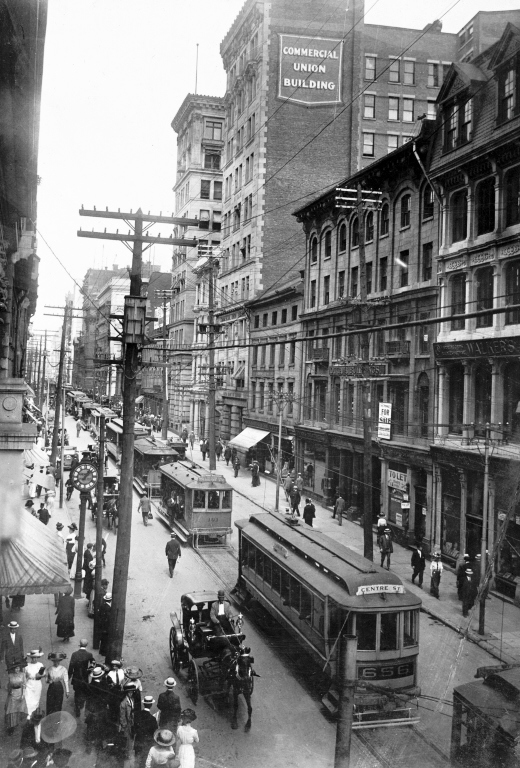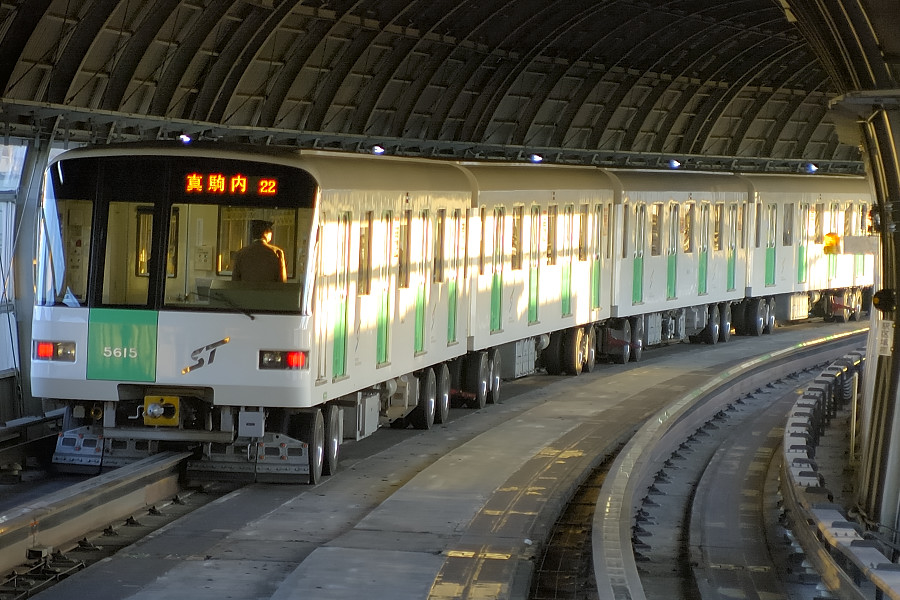|
Rapid Transit Track Gauge
The vast majority of rapid transit systems use . Some of the largest and oldest subway systems in the world use standard gauge in agreement with the country wide dominant usage for track gauge, e.g. London Underground (1863), Chicago "L" (1892), Vienna Metro (1898), Paris Métro (1900), Berlin U-Bahn (1902), New York City Subway (1904), Stockholm Metro (1950), Milan Metro (1964), Mexico City Metro (1969), Beijing Subway (1971), Seoul Metropolitan Subway (1974), Shanghai Metro (1993), Guangzhou Metro (1997), Shenzhen Metro (2004). Many rapid transit systems in countries where the main lines do not use standard gauges are built in standard gauge, including the Barcelona Metro, Santiago Metro, Taipei Metro, and many systems in India. There are also systems that use (some systems in Japan and Jakarta Mass Rapid Transit, Jakarta MRT), (the standard in former Soviet Union), (the standard in Brazil) and few others. Some systems use Rubber-tyred metro, rubber tires, with some ones add ... [...More Info...] [...Related Items...] OR: [Wikipedia] [Google] [Baidu] |
Rapid Transit
Rapid transit or mass rapid transit (MRT), also known as heavy rail or metro, is a type of high-capacity public transport generally found in urban areas. A rapid transit system that primarily or traditionally runs below the surface may be called a subway, tube, or underground. Unlike buses or trams, rapid transit systems are railways (usually electric railway, electric) that operate on an exclusive right-of-way (transportation), right-of-way, which cannot be accessed by pedestrians or other vehicles, and which is often grade-separated in tunnels or on elevated railways. Modern services on rapid transit systems are provided on designated lines between rapid transit station, stations typically using electric multiple units on rail tracks, although some systems use guided rubber tires, magnetic levitation (''maglev''), or monorail. The stations typically have high platforms, without steps inside the trains, requiring custom-made trains in order to minimize gaps between train a ... [...More Info...] [...Related Items...] OR: [Wikipedia] [Google] [Baidu] |
Taipei Metro
Taipei Mass Rapid Transit (MRT), branded as Metro Taipei, is a rapid transit system serving the areas of Taipei and New Taipei City, New Taipei in Taiwan, operated by the State-owned enterprise, government-owned Taipei Rapid Transit Corporation, which also operates the Maokong Gondola. Taipei Metro was the first metro system ever built in Taiwan. The initial network was approved for construction in 1986 and work began two years later. It began operations on March 28, 1996, and by 2000, 62 stations were in service across three main lines. Over the next nine years, the number of passengers had increased by 70%. Since 2008, the network has expanded to 131 stations and the passenger count has grown by another 66%. The system has been praised by locals for its effectiveness in relieving growing traffic congestion in Taipei and its surrounding satellite towns, with over two million trips made daily. History Proposal and construction The idea of constructing the Taipei Metro was fir ... [...More Info...] [...Related Items...] OR: [Wikipedia] [Google] [Baidu] |
List Of Metro Systems
This list of metro systems includes electrified rapid transit train systems worldwide. In some parts of the world, metro systems are referred to as subways, U-Bahn or undergrounds. , 205 cities in 61 countries have a metro system. The London Underground first opened as an underground railway in 1863 and its first electrified underground line opened in 1890, making it the world's oldest metro system. The New York City Subway has the greatest number of stations with 472. The country with the most metro systems is China, with 46 in operation. The Shanghai Metro is the world's longest metro network at and also has the highest annual ridership at 2.83 billion trips. Considerations The International Association of Public Transport (L'Union Internationale des Transports Publics, or UITP) defines metro systems as urban passenger transport systems, "operated on their own right of way and segregated from general road and pedestrian traffic". The terms heavy rail (mainly in North A ... [...More Info...] [...Related Items...] OR: [Wikipedia] [Google] [Baidu] |
São Paulo Metro
The São Paulo Metro ( pt, Metrô de São Paulo, ), commonly called the ''Metrô'' () is one of the urban railways that serves the city of São Paulo, alongside the São Paulo Metropolitan Trains Company (CPTM), forming the largest metropolitan rail transport network of Latin America. The six lines in the metro system operate on of route, serving 91 stations. The metro system carries about 5,300,000 passengers a day. Metro itself is far from covering the entire urban area in the city of São Paulo and only runs within the city limits. However, it is complemented by a network of metropolitan trains operated by CPTM and Via Mobilidade, which serve the São Paulo and the São Paulo Metropolitan Region. The two systems combined form a long network. The metropolitan trains differs from Metro because it also serves other municipalities around São Paulo with larger average distance between stations and freight trains operating in some lines (except for the Line 9, which has almos ... [...More Info...] [...Related Items...] OR: [Wikipedia] [Google] [Baidu] |
Chongqing Rail Transit
The Chongqing Rail Transit (branded as CRT; also known as Chongqing Metro) is the rapid transit system in the city of Chongqing, China. In operation since 2005, it serves the transportation needs of the city's main business and entertainment downtown areas and inner suburbs. , CRT consisted of nine lines, with a total track length of . Lines 1, 4, 5, 6, 9, 10 and the Loop line are conventional heavy-rail subways, while Lines 2 and 3 are high-capacity monorails. To keep up with urban growth, construction is under way on Line 18 and Jiangtiao line, in addition to extensions to Lines 4, 5, 6, 9, 10. A network of 18 lines is planned. The Chongqing Rail Transit is a unique transit system in China because of the geography of Chongqing being a densely-populated but mountainous city, with multiple river valleys. Two lines use heavy-monorail technology, leveraging the ability to negotiate steep grades and tight curves and rapid transit capacity. They are capable of transporting 32,00 ... [...More Info...] [...Related Items...] OR: [Wikipedia] [Google] [Baidu] |
Sapporo Municipal Subway
The is a mostly-underground rubber-tyred rapid transit system in Sapporo, Hokkaido, Japan. Operated by the Sapporo City Transportation Bureau, it is the only subway system on the island of Hokkaido. Lines The system consists of three lines: the green Namboku Line (North-South line), orange Tozai Line (East-West line), and blue Tōhō Line (North East Line). The first, the Namboku Line, was opened in 1971 prior to the 1972 Winter Olympics. The Sapporo City Subway system operates out of two main hubs: Sapporo Station and Odori Station. Most areas of the city are within a reasonable walking distance or short bus ride from one of the subway stations. The three lines all connect at Odori Station and with the JR Hokkaido main lines at Sapporo Station. At Odori and Susukino stations, it connects to the streetcar (tram) above. The system has a total length of 48 km with 46 stations. Except for the section of the Namboku Line south of Hiragishi Station, the tracks and statio ... [...More Info...] [...Related Items...] OR: [Wikipedia] [Google] [Baidu] |
Lille Metro
The Lille Metro (french: Métro de Lille) is a driverless light metro system located in Lille, France. It was opened on 25 April 1983 and was the first to use the VAL (french: véhicule automatique léger, en, light automated vehicle) system. While often referred to as the first fully automated driverless metro of any kind in the world, the Port Liner in Kobe, Japan predates it by two years. The light metro system is made up of two lines that serve 60 stations, and runs over of route. The system forms part of a multi-modal public transport system covering the Lille metropolitan area, along with buses and trams, operated under the '' Ilevia'' brand. History In the 1960s the decentralisation of the city of Lille was considered; some towns of the Lille region were isolated and were poorly served by existing public transport, while the centre of Lille was congested with traffic and buses. The decentralisation resulted in the creation of the Public Establishment of Lille E ... [...More Info...] [...Related Items...] OR: [Wikipedia] [Google] [Baidu] |
Montreal Metro
The Montreal Metro (french: Métro de Montréal) is a rubber-tired underground rapid transit system serving Greater Montreal, Quebec, Canada. The metro, operated by the Société de transport de Montréal (STM), was inaugurated on October 14, 1966, during the tenure of Mayor Jean Drapeau. It has expanded since its opening from 22 stations on two lines to 68 stations on four lines totalling in length, serving the north, east and centre of the Island of Montreal with connections to Longueuil, via the Yellow Line, and Laval, via the Orange Line. The Montreal Metro is Canada's second busiest rapid transit system and North America's fourth busiest rapid transit system, behind the New York City Subway, the Mexico City Metro and the Toronto subway, delivering an average of daily unlinked passenger trips per weekday as of . In , trips on the Metro were completed. According to the STM, the Metro system had transported over 7 billion passengers as of 2010. With the Metro and t ... [...More Info...] [...Related Items...] OR: [Wikipedia] [Google] [Baidu] |
Paris Metro
Paris () is the capital and most populous city of France, with an estimated population of 2,165,423 residents in 2019 in an area of more than 105 km² (41 sq mi), making it the 30th most densely populated city in the world in 2020. Since the 17th century, Paris has been one of the world's major centres of finance, diplomacy, commerce, fashion, gastronomy, and science. For its leading role in the arts and sciences, as well as its very early system of street lighting, in the 19th century it became known as "the City of Light". Like London, prior to the Second World War, it was also sometimes called the capital of the world. The City of Paris is the centre of the Île-de-France region, or Paris Region, with an estimated population of 12,262,544 in 2019, or about 19% of the population of France, making the region France's primate city. The Paris Region had a GDP of €739 billion ($743 billion) in 2019, which is the highest in Europe. According to the Economist Intelligenc ... [...More Info...] [...Related Items...] OR: [Wikipedia] [Google] [Baidu] |
Rubber-tyred Metro
A rubber-tyred metro or rubber-tired metro is a form of rapid transit system that uses a mix of road and rail technology. The vehicles have wheels with rubber tires that run on rolling pads inside guide bars for traction, as well as traditional railway steel wheels with deep flanges on steel tracks for guidance through conventional switches as well as guidance in case a tyre fails. Most rubber-tyred trains are purpose-built and designed for the system on which they operate. Guided buses are sometimes referred to as 'trams on tyres', and compared to rubber-tyred metros. History The first idea for rubber-tyred railway vehicles was the work of Scotsman Robert William Thomson, the original inventor of the pneumatic tyre. In his patent of 1846 he describes his 'Aerial Wheels' as being equally suitable for, "the ground or rail or track on which they run". The patent also included a drawing of such a railway, with the weight carried by pneumatic main wheels running on a flat board t ... [...More Info...] [...Related Items...] OR: [Wikipedia] [Google] [Baidu] |
Brazil
Brazil ( pt, Brasil; ), officially the Federative Republic of Brazil (Portuguese: ), is the largest country in both South America and Latin America. At and with over 217 million people, Brazil is the world's fifth-largest country by area and the seventh most populous. Its capital is Brasília, and its most populous city is São Paulo. The federation is composed of the union of the 26 States of Brazil, states and the Federal District (Brazil), Federal District. It is the largest country to have Portuguese language, Portuguese as an List of territorial entities where Portuguese is an official language, official language and the only one in the Americas; one of the most Multiculturalism, multicultural and ethnically diverse nations, due to over a century of mass Immigration to Brazil, immigration from around the world; and the most populous Catholic Church by country, Roman Catholic-majority country. Bounded by the Atlantic Ocean on the east, Brazil has a Coastline of Brazi ... [...More Info...] [...Related Items...] OR: [Wikipedia] [Google] [Baidu] |
Soviet Union
The Soviet Union,. officially the Union of Soviet Socialist Republics. (USSR),. was a transcontinental country that spanned much of Eurasia from 1922 to 1991. A flagship communist state, it was nominally a federal union of fifteen national republics; in practice, both its government and its economy were highly centralized until its final years. It was a one-party state governed by the Communist Party of the Soviet Union, with the city of Moscow serving as its capital as well as that of its largest and most populous republic: the Russian SFSR. Other major cities included Leningrad (Russian SFSR), Kiev (Ukrainian SSR), Minsk ( Byelorussian SSR), Tashkent (Uzbek SSR), Alma-Ata (Kazakh SSR), and Novosibirsk (Russian SFSR). It was the largest country in the world, covering over and spanning eleven time zones. The country's roots lay in the October Revolution of 1917, when the Bolsheviks, under the leadership of Vladimir Lenin, overthrew the Russian Provisional Government ... [...More Info...] [...Related Items...] OR: [Wikipedia] [Google] [Baidu] |






